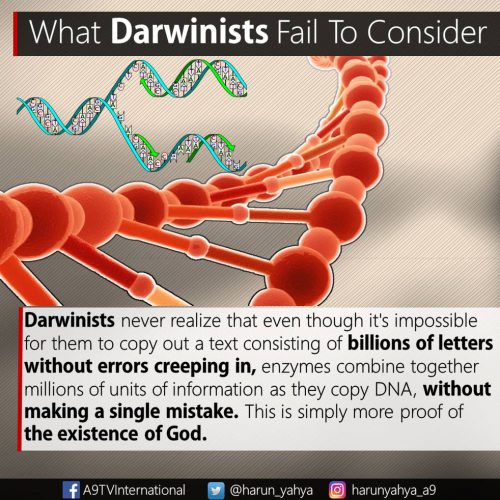I watched Guardians of the Galaxy, vol. 2 this weekend. It was a fun bit of fluff. I’m also a fan of movies that portray god-like aliens as inherently inimical to humans and evil by nature, and that therefore our purpose, if we have any at all, is to kill gods. And then there are lots of space battles with funky ’70s music and funny one-liners. Groot is adorable, but my favorite character had to be Drax.
But, I have to say, I was also distracted by the horrible science. I know, I know, this is a fantasy story based on a comic book, but I am compelled to judge.
First up, the video game-style space battles. They’re fun to watch, but come on — World War I dogfights and weapons with such high energies that you can use them to carve your way to the center of a planet? And when your ship gets hit by them it might chip the paint but otherwise just bounce off? Also, those streams of little ships in formation getting zapped by the good guys, I recognized those — I played Galaxian in my misspent youth.
Secondly, everything in this galaxy seems so cramped and close-up. “Radio” your coordinates to the galaxy at large, and in minutes hordes of space ships show up to hunt you down. Activate your doomsday device on your remote world and all of the evil death weapons start blossoming simultaneously on worlds separated by a hundred thousand light years. It’s a cartoon, but I miss the idea of the vastness of the universe.
My biggest gripe, though, is with the lazy biology. All these alien races from the far-flung corners of the galaxy, and mostly what they are is humans with different colors of body paint. This is less like a congerie of aliens and more like Burning Man costumery, only with less nudity.
But really, the movie was good mindless fun and I’ll see it again. I confess, though, in slow moments I was thinking about a SF taxonomy of alien universes. And I sort of assembled a preliminary draft in my head, which I’ve now set down in bits on the interweb. Basically I looked at these aliens and thought about how long ago these creatures would have hypothetically shared a common ancestor with Earth humans as a measure of how far out of the box the creators were thinking. The answer is usually not far at all — most aliens are Weird Americans In Space.
Here’s my classification scheme. Please do argue with it.
I. Every alien is human. They might have latex bumps on their forehead or fluorescent purple skin, but any Earth-type person is capable of breeding with them. Also, they tend to conveniently speak English.
These stories cannot comprehend the idea of a different species, and typically portray every distant alien world as having diverged from American culture roughly 100 years before.
II. Every alien is humanoid. No, you can’t mate with them, and probably don’t want to. They don’t speak English, at least, but they do have a vocal apparatus that produces sounds of the same type and range as ours, with concepts that are easily translatable.
These aliens are basically members of our genus, possibly family, and divergence occurred sometime in the Cenezoic, typically within a million years.
III. Every alien is a vertebrate. They have a head, paired eyes, jaws, a small number of limbs. They may be based on Earthly reptiles, for instance, but are often strangely distorted into a bipedal form; faces tend to be flattened and made expressive to human eyes.
Divergence is at the level of class/order, representing maybe 100 million years of evolution.
IVa. Every alien is a member of a terrestrial phylum. One type might be insectoid, another squid-like, another reptilian. Every form fits into a familiar type, although again usually the main characters will be humanoid.
Divergence at the level of the phylum implies maybe 500 million years of independent evolution.
For an interesting take on this category, Russell Powell points out that we seem to constrain ourselves to fixed sets of morphological modules that are only coupled by evolutionary contingencies, so we shouldn’t expect to see Type IVa aliens.
IVb. Every alien is a chimera with characteristics of multiple phyla. Put insectile compound eyes on the face of a humanoid; tentacles on your 4-legged vertebrate iguanoid.
The components might be separated by 500 million years of evolution, but the combination implies some kind of anastomosing lineage with fusion of wildly different species. This doesn’t happen.
V. Every alien clearly has a completely unique evolutionary history and is not in any way related to any Earthly form. There may be some convergence in general form — they may have legs, for instance, for locomotion — but they are completely different in detail — different pattern of joints, for instance, and they don’t necessarily terminate in a radial array of digits.
These represent billions of years of independent evolution from a different starting point.
Aliens like this don’t exist in movies, because they’d be visually disturbing. You know how some people freak out at the sight of spiders? It would be like that for the entire audience, who’d be struggling to interpret what the creature is doing and trying to fit it into a threat/non-threat category. You occasionally find them in science fiction novels, where the author doesn’t have to show you every distressing detail in every scene.
How about some examples?
The Star Trek universe is Type I across the board, unrelentingly vanilla. They even have a totally bullshit rationalization, that all those species are related. Also, the idea that two species could have radically different internal anatomy and physiology (green blood and two hearts in one, red blood and one heart in another) yet still look superficially similar and be able to interbreed is painfully stupid.
Speaking of painfully stupid, James Cameron’s Avatar managed to have a Type I main species (they were just big, blue, long-limbed people) with a visually well-developed background fauna with unique biological characteristics that would never in a billion years have produced the Na’vi.
The Star Wars is primarily Type I; almost all the main characters are indistinguishable from Homo sapiens, but there are a few exceptions. Chewbacca is Type II; a few of the background characters, like Admiral Ackbar or Jabba the Hut are type III.
Babylon 5 is an interesting case. Once again, it’s primarily Type I — this is simply a necessity to allow human audiences to identify with the cast. So you have Earth humans plus Centauri, Minbari, and Narn that are basically Type I humans with varying degrees of latex appliances. But then you also have the Shadows, who are Type IVa insect-like aliens, and the Vorlons are the very rare Type V, conveniently hidden away in strange-looking environment suits so you don’t have to see them…and the creators don’t have to portray a truly alien species.
The heptapod aliens in Arrival are space-faring octopuses, putting them squarely in the Type IVa category.
For the horror fans, the Alien xenomorph is Type III. It’s not that alien, sorry. It really relies on its similarity to familiar predatory morphologies to provide the scares. I just wish Cameron would stop fucking the story up with his totally bogus bad evolutionary biology.
The Predator from those movies is Type II. Those are some impressively elaborate mouthparts glued on, but it really is just a standard humanoid with some strange facial prosthetics.
As for the Guardians of the Galaxy series, it’s once again a biologically boring Type I universe where the primary species delineator is, distressingly, skin color. The colors tend to be Day-Glo hues of blues and greens and purples and oranges and gold, and fortunately no one seems to be judging people by the color of their skin, but it’s otherwise completely retro, with aliens that are only a shade different from what we got in Star Trek.
And that’s OK. These movies are for the entertainment of Earth humans, not thought-exercises in alien evolution for the delectation of freakish biologists. Don’t let my obsessions ruin what is definitely a fun movie for you.
One godless thumb up for god-murder, one primate thumb up for humor and action, one chitin-sheathed mucus-oozing appendage down for unimaginative biology, one electromagnetic flux capacitor down for bad physics, one protruding ciliated sensory apparatus emitting fluctuating phase fields radially for zgrarrl!(ptang). Obey the digits that correspond best to your cognitive and perceptual biases.









